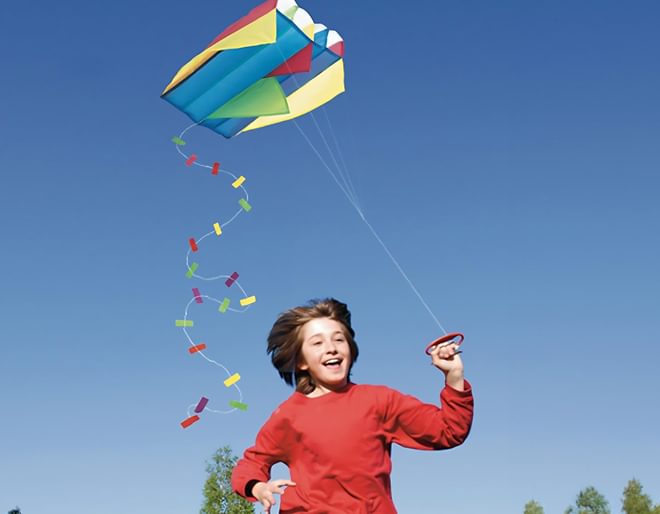Spring is here, the days are getting warmer and you need a kite! It’s always great to be outdoors, kites are awesome fun and exhilarating to fly. Great for hand-eye coordination too. Do you remember the first time you flew a kite and how joyous it was to see it flutter in the sky. Kites are brilliant for the park, the beach and even on holiday. Here are some tips on how to fly a kite and a couple of brilliant kite options.

Tips on how to fly a kite
To fly a single line, assemble your kite indoors. Once outdoors, hold the kite by the bridle until it catches the wind. When the kite catches the wind, let go of the bridle and release some line. It should be taut and not slack. If there’s not enough wind, ask a friend to walk away from you holding the kite in the air. Once the kite is up, keep it stable by pulling on the line. To land your kite, slowly reel in your line and head towards the kite until it is safely on the ground.
If you’re flying a kite with a dual line, put it on the ground with the bottom of the kite facing up or ask someone to hold it in the air for you. Slowly let out the line as you walk backwards making sure the lines are the same length. The kite can then catch the wind. To land, fly the kite to edge or side of the wind to make it fly at an angle. It can then be brought down safely.
Flying a kite isn’t hard and practice always makes perfect. Small movements usually work best. Keep an eye out for small people, prams and dogs – no-one wants a kite to land on their head!
Choosing a kite
Kites can be flown all year round if the weather is good, all you need is a bit of wind (5-25 mph is ideal). The best place to fly a kite is where there’s a large open space with no trees, buildings or power cables. Make sure there is no-one standing behind you! A kite is normally flown by one person but it’s good to have a helping hand launching it into the air.
For beginners, a delta or diamond kit is the easiest – kites that are shaped like triangles or diamonds. Single-line kites (kites with one string) are best for light to medium winds, for stronger winds use a kite with a tail made from lightweight materials. Parafoil kites are shaped like a four-dimensional box and are a little more challenging compared to a delta or diamond kite. A dual-line kite has two strings, these kites have two strings, offers the flier more control and is suitable for all wind types.
1 Jumbo Octopus Kite – 4 Metres Long , £15.99 £15.99

Colourful kite with octopus tentacles!
2 Pocket Kite , £9.99 £9.99




